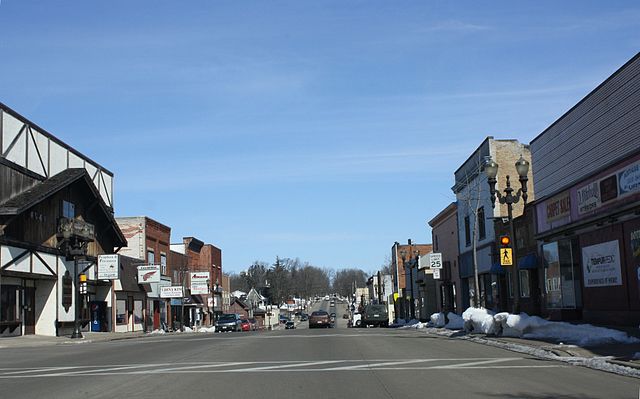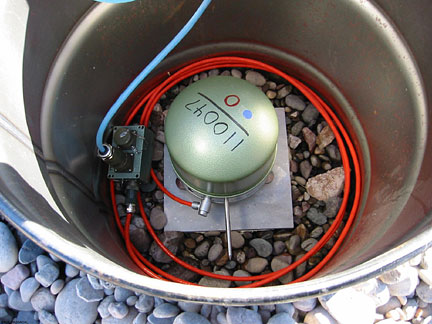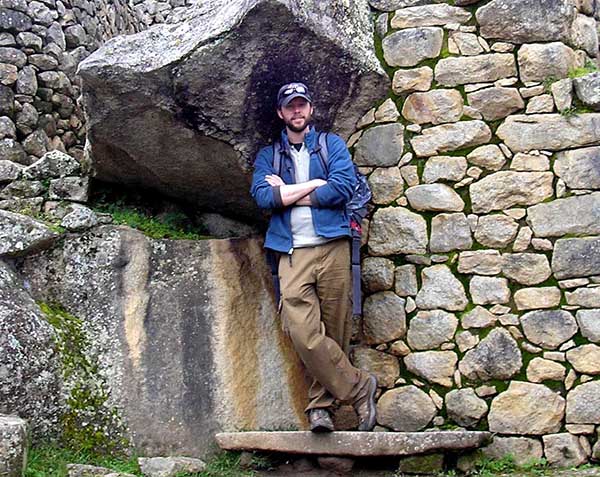
by Timothy Oleson Wednesday, April 11, 2012

Downtown Clintonville, Wis.©Royalbroil, Creative Commons Attribution-ShareAlike 3.0 Unported

An EarthScope seismometer similar to those installed in Wisconsin that were used to identify a March 20, 2012 magnitude-1.5 microquake near Clintonville. earthscope.org

Tim Oleson is a staff writer at EARTH. photo courtesy of Dave Clark
On the list of earthquake-prone states, Wisconsin does not rank highly. The largest known earthquake in the state (or at least the suspected largest quake given that its magnitude is not well established) occurred somewhere south of Milwaukee on May 6, 1947, with an intensity estimated as high as “V” (or 5) on the Modified Mercalli intensity scale — which is distinct from the moment magnitude scale customarily used to indicate earthquake severity (moment magnitude is often used interchangeably with the Richter Scale, although the two are different and the latter is no longer conventionally used by seismologists) — meaning it shook windows and caused minor damage in nearby areas.
Yes, occasionally, America’s Dairyland is subjected to light rumbles emanating from its somewhat-more-earthquake-prone neighbor to the south, Illinois. In April 2008, for example, a magnitude-5.4 earthquake in southern Illinois was enough to roust people from sleep where I live in Madison, Wis. But Wisconsin is hardly where you’d expect to find much excitement, let alone fear, over the possibility of homegrown seismic activity.
And yet, that’s exactly what happened a few weeks ago, when hundreds of people in Clintonville, Wis. — a town of 4,600 residents about 60 kilometers west of Green Bay — began dialing 911 with reports that their homes were inexplicably being shaken overnight by terrifying booms. The booms, which were variously described as sounding like explosions, sonic booms or wrecking balls slamming into walls, kept up for several days and stoked uneasy curiosity among many, fear among others, and even prompted some residents to leave town temporarily.
Town officials, who could not immediately explain the sounds' origin, enlisted the help of local utility companies and other assorted experts. They ruled out many suggested explanations, including explosions from ruptured gas lines, mining operations, landfills or military exercises, burst underground water or sewer pipes, and ground disturbances due to migrating groundwater, rapid thawing due to an unusual late-winter warm-up or fracking operations (of which there are none nearby).
Earthquakes were also ruled out initially as a possible cause. After all, Clintonville is sitting atop some of the oldest and most stable bedrock (known as the continental craton) in North America, there are no known faults in the area, and it’s nowhere near a plate boundary. Not to mention, “We’ve never had an instrumentally recorded earthquake that was big enough to be located or make it into the USGS [U.S. Geological Survey] catalog in the whole history of the state,” says Harold Tobin, a geophysicist at the University of Wisconsin at Madison.
Furthermore, when scientists first examined the available seismic data, nothing jumped out at them. They were as stumped as everyone else. Amid the ongoing uncertainty, what was at first just a local news story was quickly picked up by larger state and even national outlets like NBC, ABC and the Associated Press, which pounced on the unsolved-mystery angle and headlined their coverage with easy puns — dubbing Clintonville a “boomtown” or asking what is going boom in the night — and references to that 1990 cinematic classic, “Tremors.”
Tobin, who was among the specialists contacted by news organizations for comment on the earthquake hypothesis, says that at first glance he noticed some small features in the seismic data but figured they were more likely due to vibrations from nearby trucks and traffic. “I was a little bit mystified … Normally, especially out west, we think of earthquakes as something where, below a magnitude of about 2.0 to 2.5, nobody will report even having felt it,” Tobin says. There have been reports of audible rattling or booming sounds that at times have been thought to be caused by smaller, shallow earthquakes. In the U.S., these reports have primarily come from the East Coast, he says, but “it is totally unprecedented here in Wisconsin.”
Nonetheless, after several days of examining data from nearby seismometers in more detail, USGS concluded that the mysterious Clintonville booms were indeed caused by earthquakes. In particular, they were able to identify one small “event”— which on any given single seismometer might simply appear as noise — that occurred simultaneously in the data from six separate instruments. This event turned out to be a magnitude-1.5 “microquake” that occurred just after midnight on Tuesday, March 20. (It was identified as such the following Thursday.)
Once USGS “showed that on six different stations they could show the same small event at the right time,” it became “pretty clear it had to be some kind of micro-earthquake activity” that was causing the booms, Tobin says.
But what was the cause of the earthquakes themselves? That might never be clear. Glacial rebound — the gradual rise of land following the recession of an overlying glacier — is a possibility, but it’s not the only one. Earthquakes occur along faults and fractures due to the buildup of stress, and there is stress throughout the crust, not just along large plate boundaries, Tobin says. These microquakes could just be “associated with a little bit of a stress concentration [in the bedrock nearby], and rocks resolve that stress by fracturing.”
Tobin says the ability to identify the magnitude-1.5 microquake was serendipitous. USGS only maintains two permanent, or “backbone,” seismometers in Wisconsin, but there are currently dozens of instruments emplaced temporarily as part of the National Science Foundation’s USArray and EarthScope projects. Without these temporary instruments (a few of which were close enough to Clintonville to record the weak microquake signal), which just “happen to be here” at the right time, Tobin says, “we wouldn’t have ever known that these were earthquake events.”
Click here (or here) to listen to a recording of a boom that reportedly occurred in Clintonville on March 24.
© 2008-2021. All rights reserved. Any copying, redistribution or retransmission of any of the contents of this service without the expressed written permission of the American Geosciences Institute is expressly prohibited. Click here for all copyright requests.